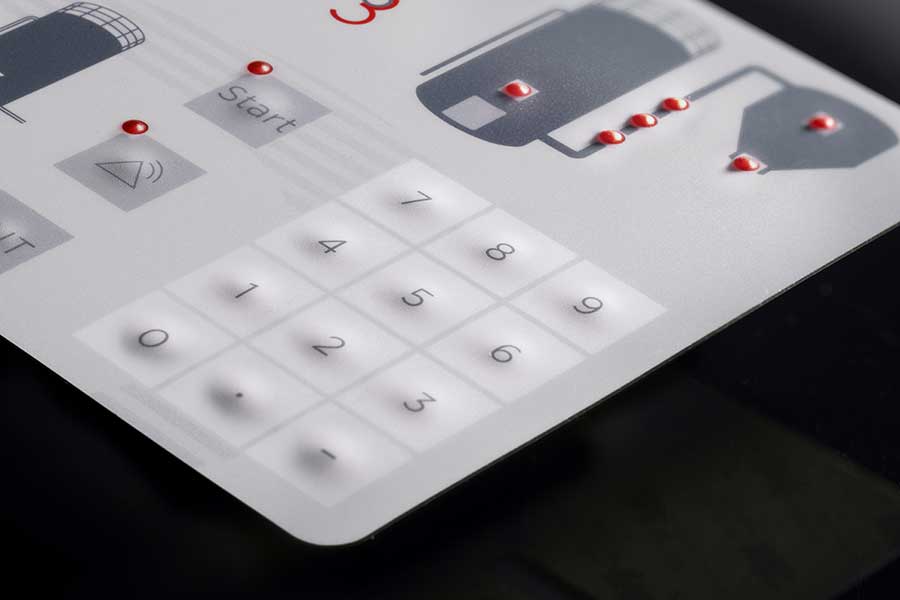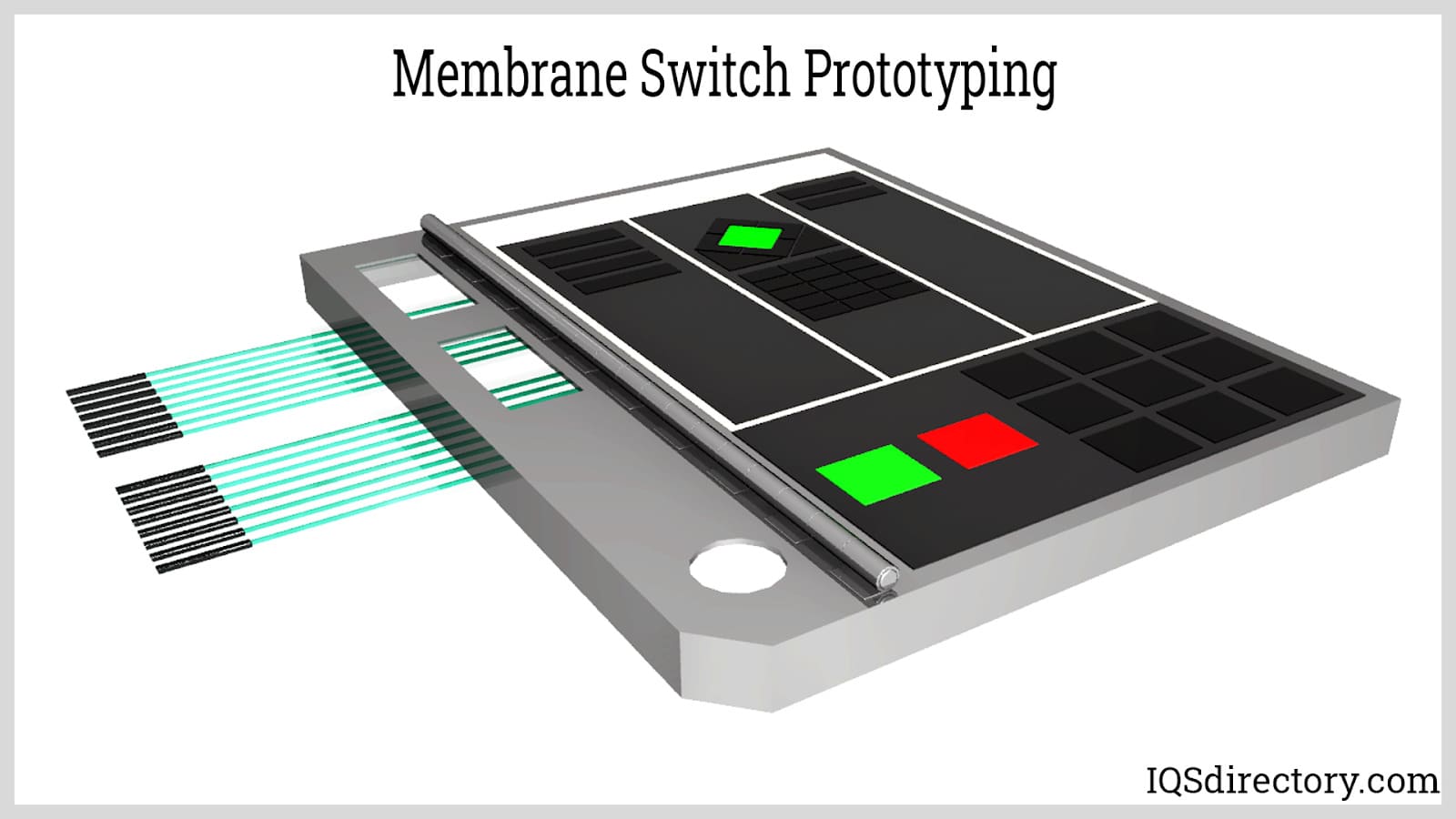How Membrane Switches Are Necessary for Creating Space-Saving, Durable Interfaces
How Membrane Switches Are Necessary for Creating Space-Saving, Durable Interfaces
Blog Article
Membrane Change Innovation: The Trick to Trusted and Cost-Effective User Interfaces
Membrane layer switch technology has actually become a crucial part in the design of user interfaces, providing both integrity and cost-effectiveness across a varied range of applications. Its durable building ensures resistance to environmental difficulties, while the adaptability in style enables customized solutions that meet particular sector requirements. As we explore the diverse advantages of membrane layer buttons, their capacity for technology questions regarding future applications and advancing fads. What does the next chapter hold for this modern technology in a progressively electronic landscape?
Understanding Membrane Switch Innovation
Membrane layer switch innovation is a commonly utilized user interface service in various electronic devices, using a seamless blend of capability and design. This modern technology incorporates several layers of materials, normally including a visuals overlay, spacer layer, and a circuit layer. The visuals overlay shows the interface elements, while the spacer layer separates the circuit layer from the overlay until a user activates a button.
When pressure is applied to the overlay, the circuit layer completes the electric circuit, sending a signal to the device. This system permits various setups, including tactile comments and backlighting options, enhancing individual communication. Membrane switches are usually produced making use of sturdy materials such as polyester or polycarbonate, making sure long life and resistance to ecological factors like dampness and dirt.
The versatility of membrane layer switches over enables their application in varied industries, including clinical tools, consumer electronic devices, and industrial controls. Their small style allows for integration right into space-constrained settings, providing an efficient interface without endangering visual appeal. Comprehending the complexities of membrane button modern technology is essential for makers and developers looking for to produce trustworthy and reliable human-machine interfaces.
Trick Advantages of Membrane Layer Switches
While different user interface services exist, membrane layer switches offer unique benefits that make them a preferred choice in numerous applications. Among the primary advantages is their longevity; membrane layer buttons are created to withstand harsh ecological problems, consisting of moisture, dust, and temperature changes, ensuring long-lasting performance. This durability dramatically reduces the demand for frequent substitutes, therefore decreasing general upkeep prices.

Moreover, membrane layer buttons are lightweight and compact, making them ideal for applications where space is limited. Their inconspicuous style adds to a sleek look without jeopardizing performance.
Cost-effectiveness is also a noteworthy advantage, as the production process for membrane layer switches has a tendency to be more economical compared to typical mechanical buttons. This cost, integrated with their dependability and convenience of setup, positions membrane switches over as a practical option for a large range of markets seeking effective and reliable user interfaces.
Applications Throughout Different Industries
How do membrane layer switches adjust to the varied needs of various industries? Membrane layer button innovation is significantly acknowledged for its convenience, making it suitable for a wide array of applications across multiple industries.
In customer electronic devices, membrane layer buttons supply a small service for remotes and home devices, boosting customer experience with instinctive design. Furthermore, the industrial industry leverages membrane switches for equipment control panels, gaining from their resistance to severe atmospheres, such as wetness and dirt.
Armed forces and aerospace applications additionally utilize membrane switches for their reliability and ability to stand up to severe conditions, making sure functional performance in essential scenarios. Furthermore, the food and drink sector takes on these buttons for automated systems, where cleanliness and convenience of procedure are critical. Eventually, membrane layer buttons are customized to satisfy the one-of-a-kind needs of each industry, verifying their vital role in contemporary innovation interfaces
Layout and Personalization Alternatives

In the world of membrane button technology, style and you can check here customization options play a pivotal function in boosting performance and customer interaction. These switches can be customized to meet particular functional demands and aesthetic choices, making them versatile components in different applications.
Among the key modification alternatives is the design of from this source the button itself, which can be created to fit one-of-a-kind customer interfaces and ergonomic considerations. By changing the shape, size, and setup of buttons, suppliers can develop intuitive styles that promote simplicity of usage. In addition, the incorporation of various shades and graphic overlays permits for branding and enhanced presence, making certain that individuals can promptly determine functions.
Furthermore, membrane switches can be crafted with various responsive comments mechanisms, such as raised switches or distinct clicks, to improve the customer experience. Different products can likewise be picked for toughness and ecological resistance, dealing with aspects such as dampness, temperature level fluctuations, and chemical direct exposure.
Ultimately, the comprehensive layout and modification options offered in membrane layer button modern technology empower companies to create tailored options that not just meet functional demands but also line up with their branding and functional needs.

Future Patterns in Membrane Layer Switches
As membrane button innovation remains to advance, future trends are increasingly concentrated on improving user experience and integrating advanced performances. One significant trend is the assimilation of touch-sensitive and capacitive modern technologies right into standard membrane layer switches. This advancement enables even more instinctive individual interfaces, giving tactile responses while special info keeping a streamlined design.
One more arising pattern is using ecologically pleasant products, driven by the expanding demand for lasting manufacturing techniques. Producers are seeking to decrease their carbon footprint by using recyclable substrates and low-impact inks, straightening with international sustainability objectives.
Furthermore, the surge of the Net of Points (IoT) is motivating the consolidation of clever functions into membrane layer buttons. Boosted connectivity alternatives will enable devices to communicate with each other, enabling for smooth assimilation into broader systems.
Additionally, innovations in printing technologies, such as electronic printing, are permitting higher layout versatility and modification. This makes it possible for makers to create intricate styles and dynamic shades cost-effectively.

Conclusion
In final thought, membrane button technology represents a vital technology in customer interface layout, using significant advantages in resilience, modification, and cost-effectiveness. As advancements continue to arise, particularly in touch-sensitive interfaces and sustainable materials, the capacity for membrane layer switches to improve individual experience and capability remains promising.
Report this page